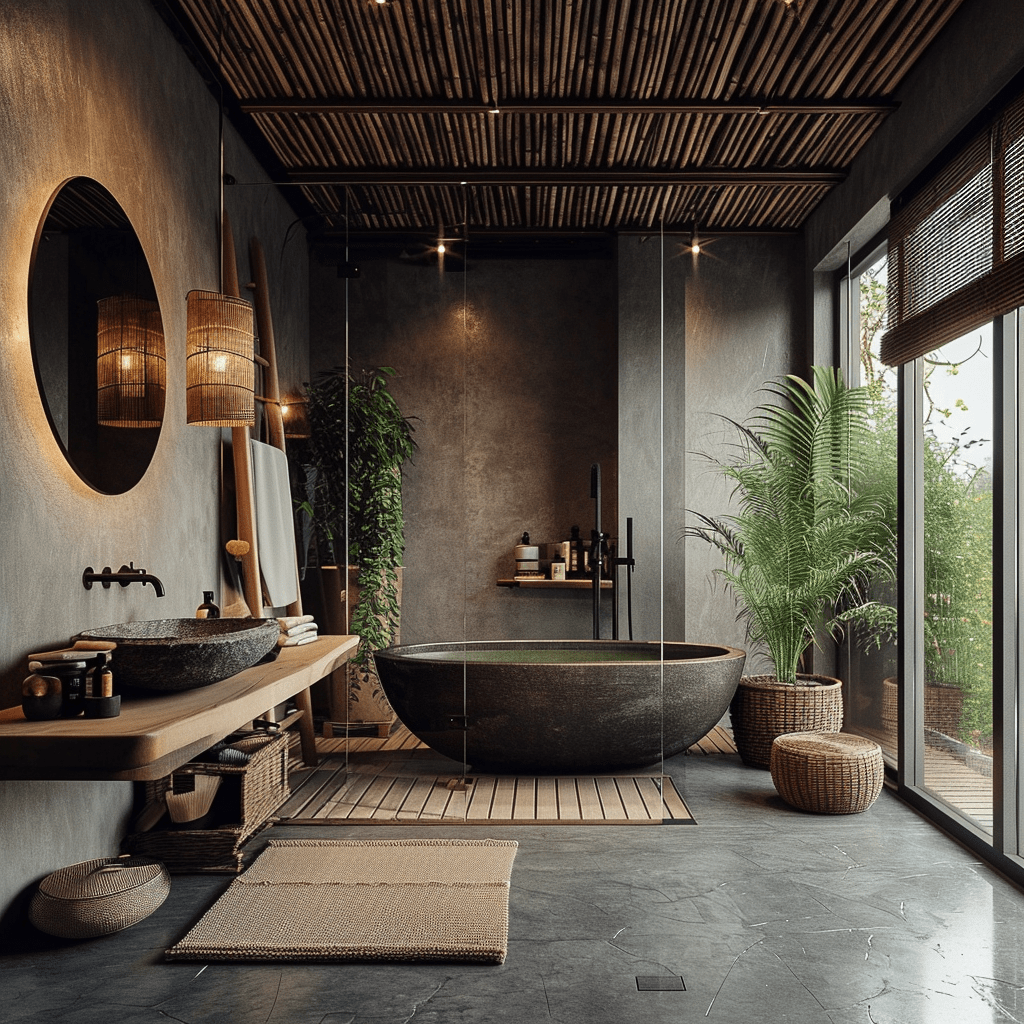Japan bathroom design transcends mere functionality, becoming a sanctuary of tranquility and mindful ritual. It’s a fascinating blend of traditional aesthetics and modern innovation, prioritizing cleanliness, relaxation, and a deep connection with nature. This unique design philosophy emphasizes efficient use of space, innovative technology, and natural materials, creating a holistic bathing experience unlike any other. The core principles of Japan bathroom design revolves around harmony, minimalism, and a profound respect for water, shaping spaces that are both aesthetically pleasing and deeply restorative.
Key Elements of Japanese Bathroom Design
Japanese bathroom design is characterized by several distinctive features:
- Separate Wet and Dry Areas: This is perhaps the most defining characteristic. A dedicated space for washing and rinsing before entering the soaking tub keeps the dry areas clean and comfortable.
- Ofuro (Soaking Tub): A deep, square-shaped tub designed for relaxation and contemplation. The water is typically heated to a higher temperature than in Western-style baths.
- Minimalist Aesthetics: Clean lines, uncluttered surfaces, and a focus on essential elements create a sense of calm and serenity.
- Natural Materials: Wood, stone, and bamboo are commonly used to bring the beauty of nature indoors.
- Efficient Space Utilization: Japanese bathrooms are often compact, but cleverly designed to maximize functionality and comfort.
Embracing the Japanese Bathing Ritual
More than just a place to get clean, the Japanese bathroom is a space for mindful self-care and relaxation. The bathing ritual typically involves:
- Pre-soaking Rinse: Thoroughly washing the body with a handheld shower or basin before entering the tub.
- The Ofuro Experience: Soaking in the hot water to relax muscles, relieve stress, and promote circulation.
- Quiet Contemplation: The ofuro is a place for quiet reflection and escape from the demands of daily life.
Modern Adaptations of Japanese Bathroom Design
While traditional Japanese bathrooms adhere to strict principles, modern interpretations often incorporate contemporary elements and adapt to different spatial constraints. For example:
- Smaller apartments may feature a combined wet and dry area, but still prioritize minimalist design and natural materials.
- Western-style showers may be incorporated alongside the ofuro for convenience.
- Technology plays a role, with features such as heated toilet seats, automated cleaning systems, and adjustable water temperature controls.
Comparing Traditional and Modern Japanese Bathrooms
| Feature | Traditional Japanese Bathroom | Modern Japanese Bathroom |
|---|---|---|
| Wet/Dry Separation | Strictly separate | May be combined in smaller spaces |
| Materials | Primarily wood, stone, and bamboo | May incorporate modern materials like tile and glass |
| Technology | Minimal | Often includes advanced features |
| Space | Can be spacious, often with garden views | May be compact and space-efficient |
The enduring appeal of Japanese bathroom design lies in its ability to create a sanctuary of peace and tranquility. It’s a testament to the power of thoughtful design to enhance our well-being. The adaptability of this design means that it can be incorporated, in parts or whole, into nearly any home. Ultimately, Japan bathroom design offers more than just a place to clean; it provides an opportunity to reconnect with oneself and find solace in the simple act of bathing.

